Spotlight
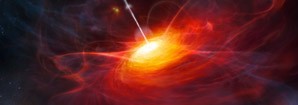
New Quasars with Redshifts 5.3<z<5.7
A collaboration led by incoming Steward postdoc Jinyi Yang (Peking University, China and Steward Observatory, University of Arizona), and including Regents' Professor Xiaohui Fan, and Feige Wang, Ian McGreer, Richard Green, Minghao Yue, and Jiani Ding have found a significant number of new quasars in a redshift range, 5.3<z<5.7, that is difficult to probe with optical data alone.
They used optical SDSS photometry combined with infrared photometry from several sources: UKIRT InfraRed Deep Sky Surveys - Large Area Survey (ULAS), VISTA Hemisphere Survey (VHS), and the WISE satellite (Wide Field Infrared Survey Explorer). Candidates were followed up spectroscopically using Arizona's MMT and Bok telescopes, as well as the ANU 2.3m telescope and the Lijiang 2.4m telescope. Fifteen new Quasars were confirmed in the 5.3<z<5.7 redshift range.
A AAS Nova article research highlight article can be found HERE.
The Journal article can be found HERE.
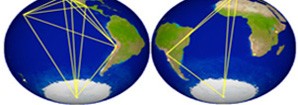
Event Horizon Telescope Takes Data to Image Sagittarius A*
Tom Beal of the Arizona Daily Star has written an update on the Event Horizon Telescope Team's efforts: Dan Marrone, Feryal Ozel, and Dimitrios Psaltis are Steward faculty members involved in the project. The article describes the new data being taken in April 2017, the process of combining the data from telescopes across the globe, the process of getting all the data in the same place, and what happens when the data are reduced and analyzed.
Dr France Cordova, Director of the National Science Foundation said in an Apr 5 statement that "This week heralds an exciting and challenging endeavor for astronomy. The Event Horizon Telescope will seek to capture a first-ever image of the supermassive black hole at the center of the Milky Way, our home galaxy. Radio telescopes from around the world, anchored by the ALMA observatory in Chile, will work in concert to test some of physics' most fundamental theories. Success will depend on both a vast network of observations and analysis of voluminous data. NSF has funded this ambitious project for the past decade, including providing major funding for ALMA. We are proud to support such a visionary goal."
From a Scientific American blog on Apr 11: "Last Tuesday, the weather at the Event Horizon Telescope (EHT) command center in Cambridge, Massachusetts couldn’t have been much worse: it was rainy and barely 40 degrees F. But that wasn’t important. What mattered were the conditions in Hawaii, Arizona, Spain, central Mexico, northern Chile, and at the South Pole. Was the weather good in all those places simultaneously? If so, they had a shot at imaging a black hole."
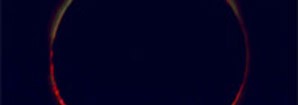
Join The UA Alumni Association, Dr Tim Swindle, and Alan Strauss at the 2017 Solar Eclipse
The UA Alumni Association, with Dr Tim Swindle of Planetary Sciences and Alan Strauss of the Mt Lemmon Sky Center, are leading an eclipse trip to Idaho for the August 21, 2017 total solar eclipse. To see the brochure, click HERE. It gives information about site, leaders, other events, and cost (airfare is extra). Scientific highlights include: 1) "Witness a full one minute and fifty-nine seconds of eclipse totality in the center line of the Moon’s shadow at a private viewing location on the shores of the Payette River, reserved exclusively for our travelers;" 2) "Enjoy behind the-scenes visits to the McCall Outdoor Science School—dedicated to youth science and environmental education, and the Alzar School, dedicated to educating youth to be passionate future leaders;" 3) "Explore the night sky in the company of expert astronomers during a star gazing party the night before the eclipse."
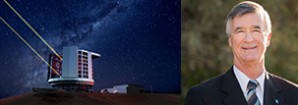
New President of Giant Magellan Telescope Organization
The Giant Magellan Telescope Organization has announced that former University of Arizona President, Fiesta Bowl Chairman, and Research Corporation President Dr Robert N. Shelton will become President of GMTO starting Feb 20, 2017. You can find the GMT press release HERE. The Arizona Daily Star has an article HERE. UA News has an article HERE.

Nobel Laureate Brian Schmidt's Public Lecture: New Location, New Ticket Price
The Brian Schmidt "State of the Universe 2017" public lecture will now be held in the Stevie Eller Dance Theater. The ticket price has been reduced to $5 thanks to a special donor.
Tickets for this event can be purchased HERE.
We are honored to be able to offer a special event to the Tucson Community. Dr Brian Schmidt, the 2011 Physics Nobel Laureate, who received a BS in Astronomy and Physics from UA in 1989, will be speaking to benefit the Marc Aaronson Prize Fund. The talk, "State of the Universe," is Monday, April 3, at 7pm, now in the Stevie Eller Dance Theater.
The independent discovery of the accelerating expansion of the Universe by two teams, one co-led by Dr. Brian Schmidt, turned physics on its head. The implications of this discovery are still reverberating through physics as researchers explore whether the discovery means that a mysterious dark energy permeates the Universe or whether Einstein's General Theory of Relativity needs some substantial tweaking. For their discovery, Dr. Brian Schmidt, his co-leader on the same team, Dr. Adam Riess, and the leader of an independent team, Dr. Saul Perlmutter, were jointly awarded the 2011 Nobel Prize in Physics.
Come hear Brian describe the exciting developments in cosmology since that discovery, when he presents his "State of the Universe" talk.
Marc Aaronson was an Astronomer and Associate Professor at UA who died tragically in 1987 at the age of 36. We have, for the past 30 years, honored his passion for science by inviting a scientist to Tucson who has worked to improve and deepen our understanding of the Universe. Thirteen previous Aaronson Prize Winners are returning to Tucson (including Dr Schmidt) to celebrate the 30th year of the Aaronson Prize Lectureship. They will be giving talks at a graduate-level science symposium on April 3 and 4.
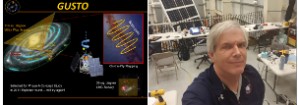
Chris Walker's GUSTO Team Selected For NASA Explorers Program.
NASA has selected Chris Walker's GUSTO team to build and launch GUSTO, the Galactic/Extragalactic ULDB Spectroscopic Terahertz Observatory, a $35-million project. It will be a long-duration balloon mission, launched from Antarctica in 2021. It will map portions of our galaxy and the Large Magellanic Cloud in terahertz lines of carbon, nitrogen and oxygen. You can read the NASA press release HERE. Tom Beal's Arizona Daily Star article can be found HERE. The UANews article can be found HERE. Congratulations to Chris and to everyone involved.
Pages

For Public
Public events include our Monday Night Lecture Series, world-reknowned Astronomy Camp and Mt Lemmon Sky Center.

For Students
A good place to start if you want to become an undergrad major or grad student, or need to find our schedule of classes.

For Scientists
Find telescopes and instruments, telescope time applications, staff and mountain contacts, and faculty and staff scientific interests.




